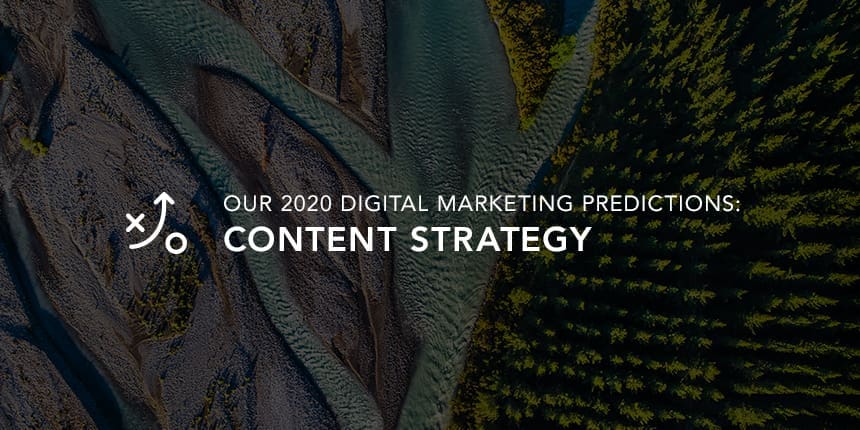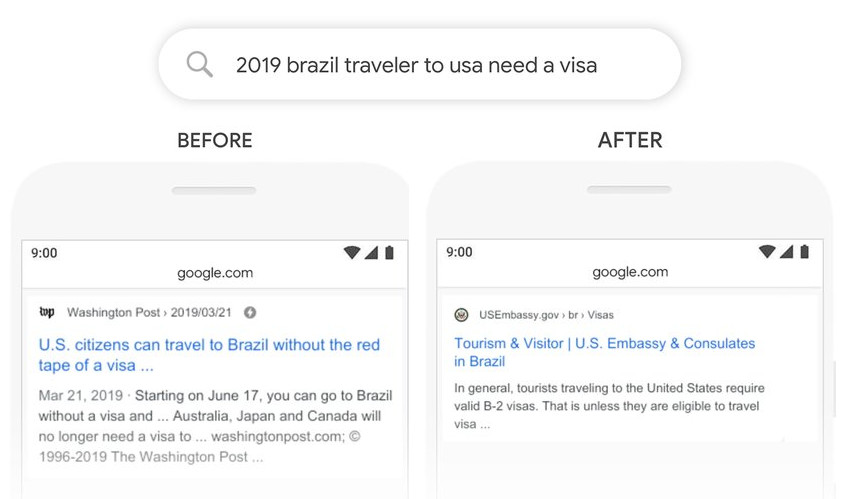
Amplify your reach and drive results with our tailored paid media strategies.

If 2019 was the year of product-focused marketing, short-form video, and provable content ROI, it seems that 2020 will be the year of audio experiences, data innovation, and in-app ecommerce.
Here are the five developments that will shape content marketing in 2020, from new platforms to the fundamental way people will find and consume content.
By 2020, 30% of all searches will be done using devices without screens, and by 2024 the global voice-based smart speaker market could be worth $30 billion. This raises some big questions for marketers. How do we account for the shift in how users consume and engage with voice content? How will voice content rank? Will there be opportunities to optimize audio content’s visibility and engagement? Well, to get started:
As predicted last year, 20% of mobile searches are now voice-based and 40% of adults use voice search daily. As a result, the sharpest brands are focusing less on keywords. Instead, they’re creating content in a more natural, conversational tone—and focusing on user intent. As with any technology, your audience should inform how deeply you should invest from a content perspective. The rapid uptake of these tools and devices suggests that voice will continue to grow as an interaction ecosystem for the foreseeable future. See our free voice search white paper for more.
As video continues to grow in 2020, look out for NTWRK, a website and iPhone app that combines video with ecommerce to give fans first dibs on new merch from their favorite brands. Highly experience driven, it features live, shoppable digital episodes hosted by pop culture personalities. With investors including LeBron James, Warner Brothers, Drake, and Live Nation, NTWRK allows brands to promote products without the logistical challenges of physical events—although they do plan to have live events in future.

On the chat and product discovery front is Kik, an instant messaging app among the 10 most popular apps among US teens: 70% of users are between 13 and 24 years old, a third of whom use Kik to message both friends and brands. Brands have bots within Kik and users are incentivized to chat directly with them and consume content to earn a cryptocurrency called Kin. There are interactive quizzes and games, while brands can also give users branded GIFs that boost brand awareness and online sentiment. A collaboration between Kik and Paramount for the TMNT movie garnered 147.5 million total impressions and 21 million messages. A marketer’s dream! The platform is being acquired by MediaLab, an indication of the potential growth opportunities for this app.
Savvy marketers know that email’s perception as an old school, outdated channel is undeserved. Email is in fact a performance channel that gives brands the opportunity to not only communicate with their audiences one-on-one but also measure its success instantly. In 2020 and beyond, personalized email content will establish itself as a norm rather than a “nice to have”, especially in nurture and retention strategies. Consumers have been demanding content that is relevant to their needs for some time now, and next year we’ll see an extremely low tolerance for mass marketing in the form of redundant, non-segmented email blasts (or spam, in other words!).
A significant development to keep in mind here is predictive email—a huge boon for ecommerce brands, who will be able to use automated functions to predict which content will be most engaging for specific recipients. Predictive analytics will enable the collection of customer data for further analysis. It will also layer in purchase history, helping brands know which products are bought most often and how often store visits are occurring. With those insights, more brands will know what and when to email customers to maintain a good relationship with them.
Subscribe to our monthly newsletter.
Google has long sought to better understand exactly what searchers are looking for. In recent years, the proliferation of rich snippets in SERPs has helped—think concise Answer Boxes that address short, definition-based queries directly—but 2020 may just usher in “one of the biggest leaps forward in the history of search“.

With BERT, a natural language-focused AI, Google is focusing on the increasingly conversational nature of search and content. As a result, content and SEO will become further entwined. As user intent becomes the single most important ranking factor, backlinks and other SEO technicalities will only be able to push websites so far; instead, copywriters and content strategists will be the difference between top-ranking and barely visible. Expect niche content to drive the biggest wins, and get a head start on BERT with our full post on his arrival.
Biometric data—all identifying information apart from an individual’s name and demographic—is beginning to impact digital marketing through real-time targeted messaging powered by customer profiling. This is, in short, the ability to display or deliver specific content at certain places and times based on biometric readings.
For example, Allen Ganz, Customer Experience Vice-President at NEC Corporation of America, told The New York Times that his company developed facial recognition systems for sports venues that could “estimate anonymously the age and gender of people coming into the stadium”. Electronic billboards connected with such systems display customized messages that appeal to the people standing in front of them. Other systems can also be used to identify people and deliver targeted messaging to their smartphones or other personal devices.

There are fairly significant obstacles in the form of inconsistent regulation, high implementation costs, and rising consumer concerns about privacy and security. In a recent eMarketer survey, only 15% of respondents found it acceptable for advertisers to use facial recognition to gauge people’s responses to public ad displays. The majority (54%) were outright opposed to such use. Nevertheless, these kind of targeting technologies and strategies will soon go from sci-fi staple to everyday reality.
There’s a common thread running through these trends, predictions, and developments. In essence—and as we’ve always advocated—content strategies cannot exist in isolation. The need for cross-department cooperation, subject matter collaboration, and joined-up thinking is more acute than ever before.
If you’re still not sharing insights to develop better go-to-market strategies, then it’s probably time to regroup and retool before 2020 leaves you behind. Think about the increasingly important convergence of UX, content, SEO, paid media, and local; consider the entire user experience, from back-end CRM to personalized messaging; above all, enlist the experts you need to fill any knowledge gaps and develop a comprehensive content strategy for 2020 and beyond. All you have to do is…
Amplify your reach and drive results with our tailored paid media strategies.
Amplify your reach and drive results with our tailored paid media strategies.
Subscribe to our monthly newsletter.